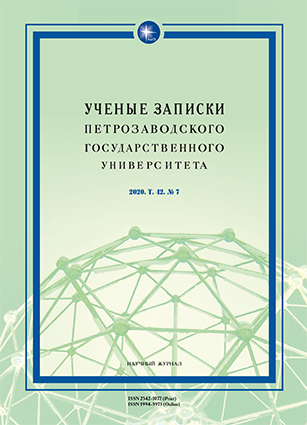СОПОСТАВИТЕЛЬНАЯ ХАРАКТЕРИСТИКА ОБРАЗНЫХ ПОЛЕЙ
«ТОПОЛЬ – ЧЕЛОВЕК» И «КЛЕН – ЧЕЛОВЕК» В РУССКОЙ ПОЭЗИИ
COMPARATIVE CHARACTERIZATION
OF THE FIGURATIVE FIELDS “POPLAR – HUMAN” AND “MAPLE – HUMAN”
IN RUSSIAN POETRY
Author(s): Marina Gennadievna SokolovaSubject(s): Language and Literature Studies
Published by: Петрозаводский государственный университет
Keywords: Russian poetry; dendronyms; tropes; figurative field; figurative paradigm; poetic image; semantic characteristic; anthropomorphism
Summary/Abstract: The article studies the dendronyms poplar and maple as parts of comparative tropes in the poetic texts of the XIX andXX centuries from the fi gurative fi eld perspective. This is the fi rst-of-its-kind comparative multi-aspect characterizationof the fi gurative fi elds “poplar – human” and “maple – human” based on such criteria as the composition of fi gurativeparadigms, fi eld areas, and actualized semantic features. When systematizing the fi gurative means of language,the author adheres to the semantic fi eld principle, ideographic principle, and the theory of reproducibility and paradigmatismof poetic images. The composition of fi gurative paradigms in the structure of the studied fi elds is revealedthrough the similarity of the vehicles: 1) “poplar / maple – human behavior”; 2) “poplar / maple – social features ofa human”; 3) “poplar / maple – external features and internal qualities and properties of a human”; 4) “poplar / maple –human body parts”; 5) “poplar / maple – biblical or mythological creatures, etc.”; 6) “maple – groups of people”. Thestructure of the studied fi elds is described by the fi eld areas (core, center, periphery) on the basis of the total number ofvehicles, the number of repeated vehicles, and the frequency of their reproduction in poetic contexts. The semantic featuresactualized by the stable, repeated vehicles characterizing the said dendronyms are identifi ed: 1) general features(‘sound’ (whisper), ‘activity’ (watch, listen, walk), ‘state’ (sleep), ‘shape’ and ‘location’ (head)); 2) specifi c featuresof the dendronym poplar (‘sound’ (sing), ‘activity’ (run), ‘characteristic’ (lonely, lazy), ‘age’ (young), ‘shape’ (high,slender), ‘shape’ and ‘location’ (eyes, hands)); 3) specifi c features of the dendronym maple (‘action’ (bow), ‘age’ (old),‘shape’ (curly), ‘shape’ (heart), ‘color’ (crimson)). The developed methodology of structuring the fi gurative fi elds of thedendronyms poplar and maple in Russian poetry can be applied to the study of the fi gurative potential of other groupsof words within the semantic fi eld “Plants”.
Journal: Ученые записки Петрозаводского государственного университета
- Issue Year: 42/2020
- Issue No: 7
- Page Range: 45-53
- Page Count: 9
- Language: Russian

